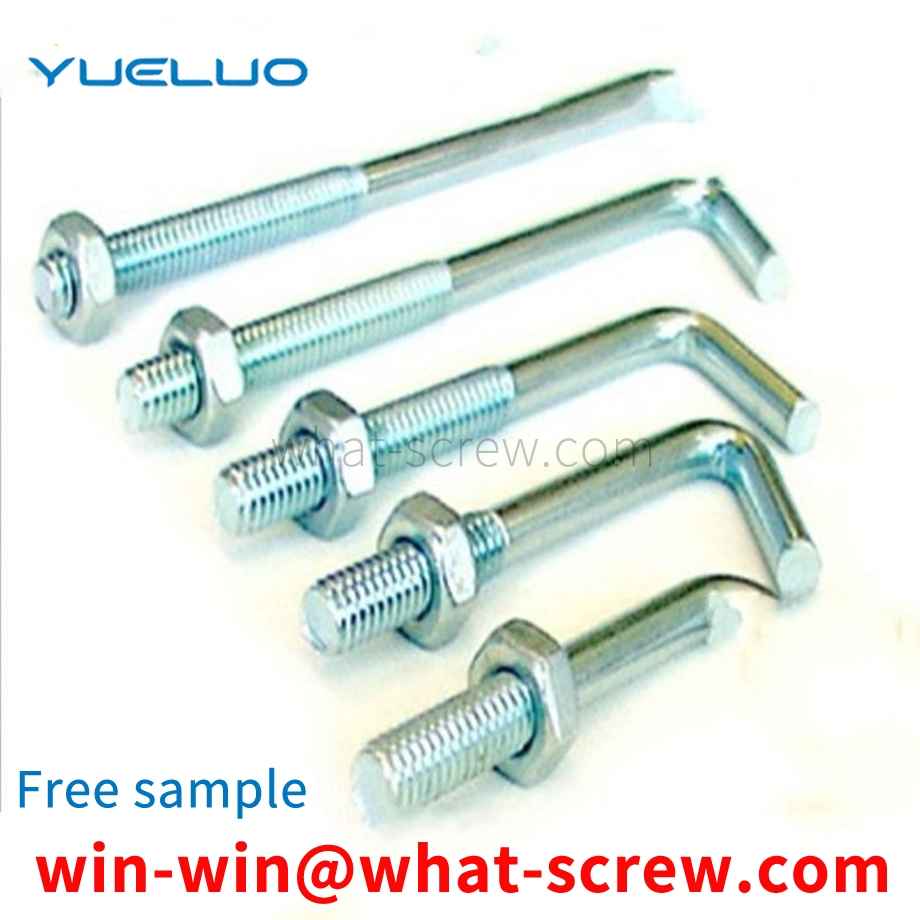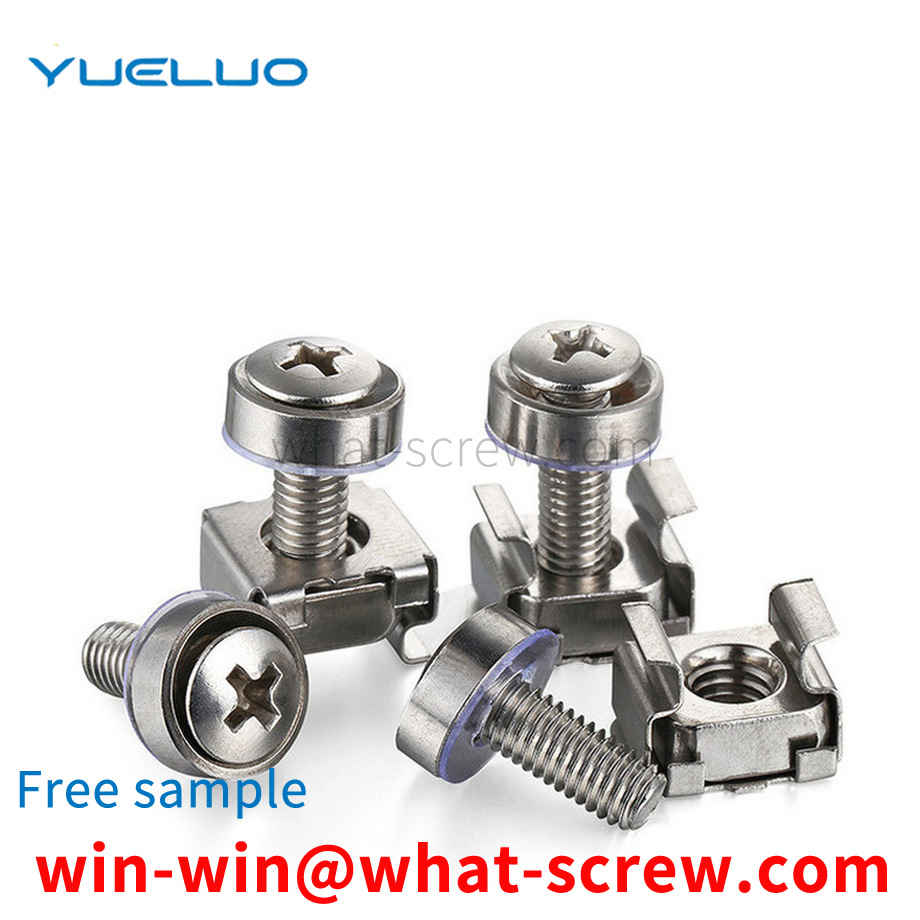In terms of screw standard specification broadcast, there are two versions of the national standard, one is GB70-76, the 76 version, and the other is GB70-8585 version. Our company is now implementing the DIN912 standard, so it should be paid attention to in actual business operations. Difference: GB70-85 and DIN912 completely overlap, so there is no difference in the use of the new standard, mainly because there is a difference between GB70-76 and DIN912: M8 series hexagon products, GB70-76 round head diameter It is 12.5MM, which is smaller than 13.27MM of DIN912. For M10 series inner hexagon products, the round head diameter of GB70-76 is 15MM, which is smaller than 16.27 of DIN912. The inner hexagon of M12 series, the round head of GB70-76 The diameter is 18MM, which is smaller than the opposite side of DIN912, which is 18.27. In addition, the round head diameter of the inner hexagon GB70-76 of M16 and M20 series is 0.33MM smaller than that of DIN912, which are 24MM and 30MM respectively. DIN912 is 24.33MM and 30.33MM respectively. In addition, the width of the inner hexagon between the old standard and the German standard is different due to different standards. The inner side of GB70-76 is smaller, and it should be paid attention to in business operations. In addition, there are also some differences in the carriage screws that may be used at ordinary times. I will also make an explanation here. In the national standard, there are two standards for carriage screws, namely GB12 (small semicircular head square neck screw) and GB14 (large semicircular head square neck screw) Neck screws), and the German standard DIN603 is usually more commonly used in the market. Now to distinguish these three: for the round head and neck, when comparing the same specifications: GB12
When processing some disc parts, the mandrel is often used for positioning, and the nut is pressed on it. However, the ordinary nut cannot meet the requirements due to its small end face and poor flatness. The user needs to make the nut, and the cost is high due to single-piece production.
Some electronic products need to install some plastic parts or protective sleeves for components on the PCB, which need to be fixed by screws. The function of the fixture is to locate the PCB and the required installation parts, and increase the work efficiency. The existing screw fixture is inconvenient According to the needs of the site, the positioning station of the screw can be changed, the accurate positioning of the screw is difficult and the clamping effect of the workpiece is poor. A screw jig is proposed.
Inch Screws C-1: Thread Code: The denominator is marked as 8, and then the numerator is directly called the number. Ex: 1/8 x 0.50 –PPB: 1 Thread screw x 0.50” long, PPB Ex: 5/16 x 0.50 –PPB = 2.5/8 x 0.50-PPB : 2 ½ inch screw x 0.50” long, PPB Ex: 5/32 x 0.50 –PPB =1.25/8 x 0.50-PPB: 1 ½ ½ inch screw x 0.50” long , PPB Ex: 1/4 x 0.50-PPB= 2/8 x 0.50-PPB: 2-point screw x 0.50” long, PPB Note: Coarse or fine pitch is sometimes indicated. UNF: Fine pitch: more commonly used in the electronics industry UNC: Coarse Thread: More commonly used for heavy machinery construction. Ex: 3/8 x 0.50, UNF –PPB: 3 point fine thread screw x 0.50” long, PPB. C-2: Length Code: In inches, must be multiplied by 25.40 is converted to mm. Measured with a buckle gauge, it is a metric thread when it matches the metric thread, and an inch thread when it matches the inch thread. You can also use a caliper to measure the outer diameter and pitch of the thread. The outer diameter of the metric thread is in millimeters, Such as 6, 8, 10, 12, 18, 20 mm, etc., the pitch is also in millimeters, such as 0.5, 0.75, 1, 1.5, 2, 3, etc. The outer diameter of the imperial thread is in inches, (per inch Equal to 25.4 mm) such as 3/16, 5/8, 1/4, 1/2, etc. Therefore, the reading of the outer diameter with a metric caliper often has irregular decimals. The inch pitch is expressed by how many teeth per inch. Set the caliper at 25.4 mm, align one caliper tip with the thread cusp, and the other caliper tip, if aligned with the thread cusp, is an inch thread, and if the thread cusp is not aligned, it should be a metric thread. The tip is printed on the white chalk. The chalk is clear and easy to measure. To measure the metric pitch, you should measure a length, such as 10, 15, 20, millimeters, etc., count how many teeth are included, and calculate the pitch in inches. The specified thread specification is inch thread, such as: G1. Metric threads are specified in metric units of millimeters. Such as: M30. The imperial system is determined by how many teeth there are in one inch (2.54 cm), generally a 55-degree angle. The metric system is the pitch determined by the distance between the two tooth tips, usually a 60-degree angle anchor screw: tighten the machine, etc. Screws for use on the ground. Also called anchor bolts. The difference between British and American screws is difficult to distinguish visually. The difference between British and American screws is that the rolling angle of British screws is 55 degrees, while the rolling angle of American screws is 60 degrees. These two standard screws are used in most screws. It can be used in general, but 1/2 size screws are not allowed, because the standard thread of inch 1/2 is 1/2-12 teeth, while the American system is 1/2-13 teeth.
screw is a type of fastener that cooperates with threaded holes for combining various parts into one assembly and making the parts easy to assemble or disassemble. However, when the assembly containing the screw is used in a special environment, such as outdoor use or use in a liquid environment, there are requirements for preventing the leakage of liquid through the screw joint and preventing the screw from loosening at the screw joint. The screw structure does not have such a function. In the prior art, when there is a need for leakage prevention and loosening of the screw, a rubber washer is usually added between the screw head of the screw and the locking surface of the locked part, or the thread part of the screw is wrapped to prevent Leakage tape and then add anti-loose washers between the screw head of the screw and the locking surface of the locked part, so as to achieve the purpose of preventing leakage and loosening. However, the use of washers not only increases the thickness and weight of the assembly, but also requires an additional process during assembly, which is labor-consuming and labor-intensive. In the process of screwing, it is easy to cause uncertainty to the rubber washers due to the shear stress of the screws. Leakage occurs due to damage and deformation, and the practice of wrapping leak-proof tape around the screw teeth is often prone to damage to the threaded holes.
We have many years of experience in the production and sales of screws, nuts, flat washers, etc. The main products are: wire rope tensioning screws, non-standard flat washers, stainless steel extra-small washers, cup head hexagon washers and other products, we can provide you with The right fastener solution for you.



















 Service Hotline
Service Hotline




